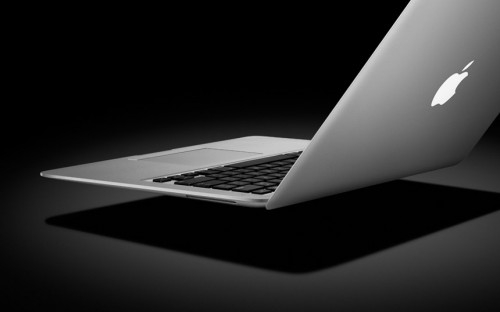Inside the MacBook Air: Can Apple justify its value proposition?
Apple is now in the position where it cannot hold a proper Macworld without unveiling "One More Thing." But with the iPhone being a hard act to follow, was the MacBook Air enough to keep the world's gadget haven at the top of its game?
![]()
It is not the iPhone -- that is, it isn't the game-changing device that forced an entire segment of the industry to rethink its approach to design, functionality, and service. The MacBook Air is an attempt to fill a gap, and with the iPhone now having reportedly sold 4 million units by Apple's numbers, that gap is smaller now than ever before.
The gap is this perceived empty space of form and functionality that manufacturers continue to believe exists between the smart phone and the small PC. With the notebook PC very rapidly, if not yet completely, becoming a commodity item in the US market with very little room for distinguishing value -- although Alienware keeps right on trying -- it's almost impossible for any manufacturer to make a compelling case for why its models deliver better value than others', beyond a competitive price point.
While the MacBook Air works to fill this gap, I can't help but be very thankful that Apple didn't try to build a UMPC or Mobile Internet Device, as some believed it might. Up until this morning, rumors were still flying that the company would produce an ultra-sub-notebook or a "handtop" that's teardrop-shaped and not much larger than an iPhone. As Samsung and Intel have already proven, there isn't much of a market for that form factor in the US. To make a truly valuable proposition at that size, a manufacturer needs a standout device, which an OQO or an Eee PC arguably is.

Although from certain angles it's certainly beautiful, from a practical perspective, the MacBook Air may not be that much of a standout. It has some classic elements of Apple innovation, including a touch pad that recognizes gestures similar to what the iPhone recognizes, and a mere 3 pounds of weight. But for the type of applications that define a Macintosh as opposed to a mere iPhone, an 80 GB hard drive will not be enough. And its Remote Drive concept -- which borrows the machine's built-in 802.11n Wi-Fi link to connect with another nearby device, including a Windows PC, for borrowing its optical disc -- runs the risk of turning the Air into an $1800 peripheral.
An external optical drive is available, though as Toshiba learned to its detriment with its first ventures into the sub-notebook form factor, carting along even a lightweight two-part contraption doesn't beat the convenience of a slightly heavier one-part. To paraphrase Arlo Guthrie as I've done so often before, one big pile remains better than two little ones. Besides, that optional add-on blows away the $1800 price point.
With an extra weight of just two pounds, you can shave several hundred dollars off the price of an Air and get a classic MacBook. You may not be getting the 45 nm Intel 1.6 GHz Core 2 Duo (1.8 GHz with the solid-state drive upgrade), but you'll actually be getting a faster one anyway, plus you'll get the convenience of the optical drive built-in, and you'll get a faster hard drive. (80 GB is cutting it a bit close these days, though with the classic MacBook, you can upgrade that to 250 GB.) You also may not get the "gestures" feature, at least for now, but it's probably only a matter of months before that feature is retrofitted onto every MacBook, and perhaps even added to iMac.
[We've since learned that despite what both Steve Jobs and Intel's Paul Otellini said about shrinking the die, the CPU for the Air is actually a 65 nm product.]
It's at the classic level where Apple is already price-competitive. This afternoon, we configured the price of a comparable Sony Vaio VGN-SZ740, with a 2.0 GHz Core 2 Duo, 2 GB of DRAM, a 120 GB hard drive, a DVD combo drive, the same-size 13.3-inch display, and built-in camera like the Air. Sony's Style store quoted us a price of $1,400. Bumping up the classic MacBook to 120 GB would bring its price up to par with Sony's, and still what we used to call "the Apple premium" -- that extra price tacked onto anything with an Apple logo on it -- would be missing altogether.
One of the temptations that did crop up over the last few weeks of rumors was the hope that perhaps Apple was playing with the idea of a solid-state drive. After all, it is one of the world's largest single manufacturers of flash-memory-based devices, so it could possibly buy in quantity and get a price break.
If it is getting a price break on the SSD-endowed MacBook Air option, you'd never know it. Substituting the HDD with a 64 GB solid-state drive cranks the MacBook Air price to a colossal $3,098.
So after the luster wears off, will the fact that you can slip the MacBook Air into a mailing envelope be enough to justify an extra expenditure of $300 - 400? It isn't that much of a jump -- certainly "the Apple premium," if there still is one, is lower than it ever has been in history. But there may also be a number of other elements about the MacBook Air to which the phrase "not much of a jump" may also apply, and that right now is the danger Apple faces.